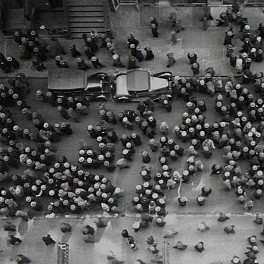BIOGRAPHY

1904 - 1971
Born in the Bronx, New York in 1904, Margaret Bourke-White was the first female photojournalist. Getting her start around 1927 in Cleveland, Ohio, at the Otis Steel Company where she worked as a female industrial photographer, Bourke-White went on to capture many iconic moments in history.
She became a staff photographer for Fortune magazine in 1929 and it was with Fortune magazine that she captured her famous portrayals of the Dust Bowl victims in the mid-1930s. She was the first Western photographer allowed into the Soviet Union and traveled there multiple times to photograph the industrial life during the First Five Year plan.
In 1936, Bourke-White accepted a position at LIFE Magazine as the first female photojournalist. Her photograph of the Fort Peck Dam is recognized worldwide as being the first cover photo for LIFE Magazine. During WWII Bourke-White was also the first female to be a war correspondent; She traveled with the US Army Air Force through North Africa and later with the US Army in Italy and Germany, capturing the horrors of combat zones. She was one of the first on the scene with General George S. Patton at the freeing of the Nazi concentration camp in Buchenwald.
Bourke-White traveled to India twice during the mid-1940s where she chronicled the Indian independence movement, partition, and Gandhi during his last moments of peace prior to his assassination as well as his funeral.
Margaret Bourke-White developed her first symptoms of Parkinson’s disease in 1953, eventually dying of it at the age of 67 in Stamford, Connecticut.
